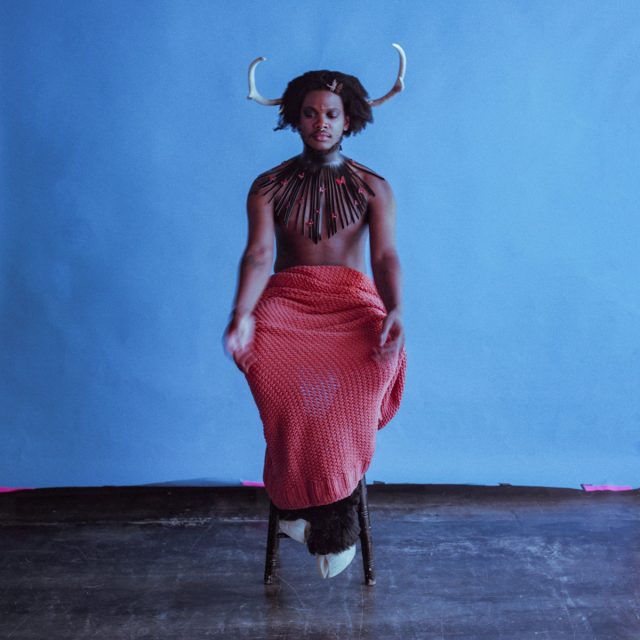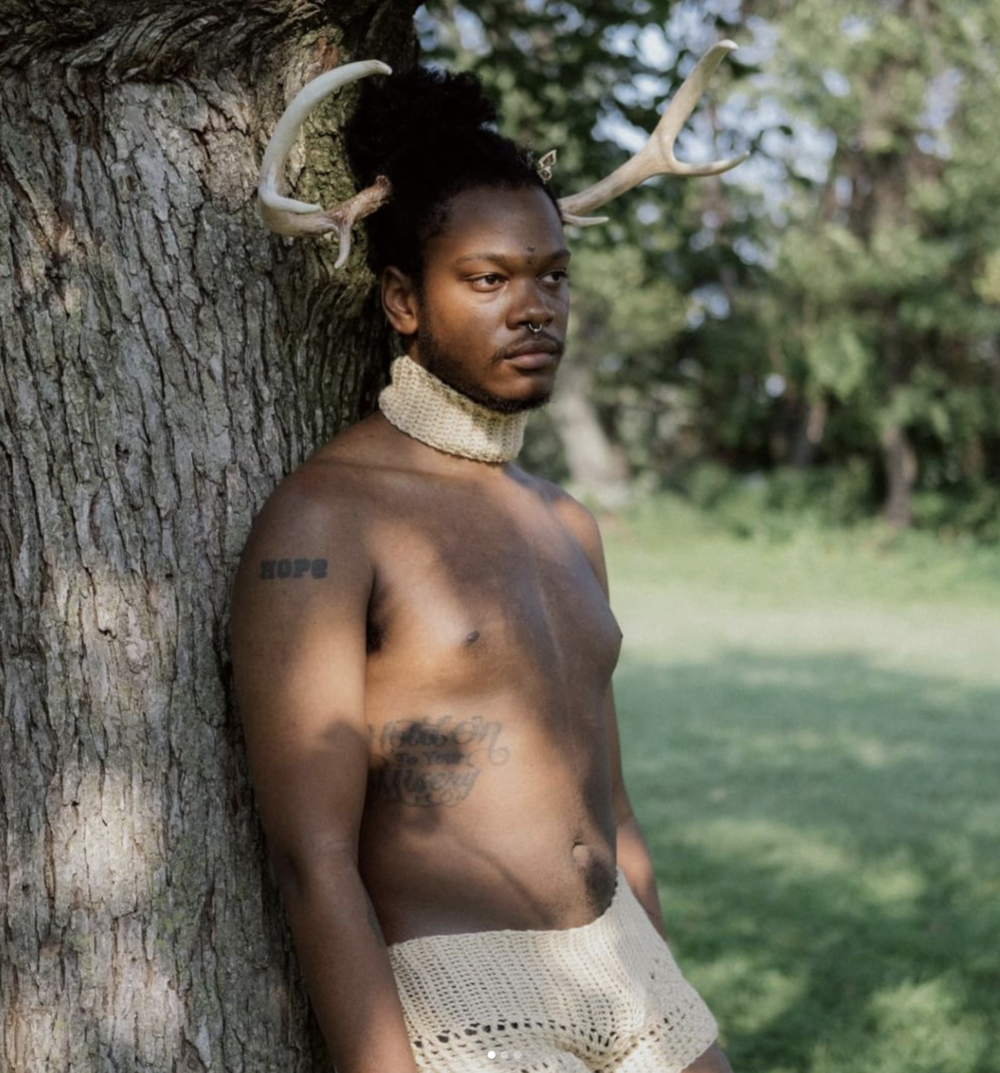
Adorned with horns and hooves, topless and draped in fabric reminiscent of a long skirt, mononymous artist Shamir dresses as the pagan deity Baphomet on the cover of his latest release Heterosexuality. But the character sometimes associated with demons is often misunderstood, intended instead to represent a combination of binaries — male and female, half-human and half-animal, good and evil — a way to balance opposites, a representation of equilibrium.
One of the most anticipated albums of 2022, the new LP from the Philadelphia-based songwriter is a sweeping challenge to the cisgender, heterosexual status-quo and the first time the nonbinary artist adresses his queerness head on.
“It’s not lost on me that my most queer record is eight albums in,” he says.
In the past, Shamir has made it a point not to be explicit about his sexuality in his music. There are a few exceptions, like 2017’s “Straight Boy,” which challenges the inability of cis-het men to be authentic, strangled by their concern over society’s perceptions of them, and how that turns into hate for anyone who bucks convention. But for the most part, he has taken the opportunity with each new project to explore himself as an artist beyond his gender and sexuality, intentionally defying expectations.
“I didn’t want to be categorized as just a queer artist and then have to feel pressure to only write about queer subjects,” he says. “I think a lot of other queer artists feel that same pressure.”
Some of this was a reaction to Shamir’s initial brush with fame. His 2014 dance-pop single “On the Regular” drew critical acclaim and media attention, all of which centered around his queerness while largely ignoring his artistry. It was traumatizing, Shamir admits. He eventually broke ties with his label. He considered leaving the music industry and never picking up a guitar again. But then he moved from his native Las Vegas to Philadelphia, drawn to the understated rock scene that allowed him the freedom to make the music he wanted.
Gender and genre

Shamir has released seven albums over the last seven years, each exploring the boundaries of genre, from hip-hop to country, pop-punk and indie rock. Just as mainstream understanding surrounding the spectrum of gender and sexuality has expanded exponentially this century, he says, a widening of our understanding of genre can follow a similar path.
“A lot of people think I want genre to be eradicated, and I don’t think that at all,” he says. “I think categorization is needed for organization, but for nothing more.”
There was a certain point in music history, he explains, when music was just music, enjoyed for what it was in time and place without the genre descriptors we currently use. But then came the charts and the money and the rigidity of genre categorizations to connect the two.
“There’s now a wider conversation [happening] and we kind of see how they can be useful, but also how they can be restrictive and how we can allow leeway within those,” Shamir says. “I really wish the music industry as a whole would tackle genre in a similar way as we have been able to tackle sexuality and gender.”
Instead of rewarding musicians for doing the same thing over and over again from record to record in line with genre norms, Shamir asks us to consider a more fluid artistic expression, similar to other art forms. Visual artists, he explains, are meant to change it up — they’re expected to create an entirely new and even different body of work for each gallery show.
Shamir identifies more as an artist than a musician. Music is simply the avenue, the medium through which he chooses to express his creativity.
“I kind of see myself more as an artist following my views and don’t really care or think about what that means for me as a musician, even as a public figure,” he says, “I think that’s why every record sounds different. That’s not on purpose. I think a lot of people think that’s a conscious creative choice, and it’s not. Every record just kind of sounds different from the last because that’s just naturally how it is.”
Heterosexuality is deeply rooted in Shamir’s first love of indie rock, drawing on the industrial-influence seen in bands like Nine Inch Nails. There’s a certain hostility to the record, a response to society’s problems with him, not necessarily his problems with society, as he recently told NPR. The album explores a range of reactions — hostility, rage and hopelessness in equal measure — without relying entirely on pathos.
“It’s emotional. It’s just not motivated by emotions. I think it would not be helpful if it was just me spewing about how sad I am because I’m so oppressed,” he says. “You don’t necessarily have to be nonbinary to identify with the pressures and strife that comes with gender roles.”
Shamir couldn’t have written this album any earlier in his career. At 27, he now has enough experience living life in his body to feel settled in his identity, and to create something with enough nuance to stand the test of time. This allowed the artist to make a record that isn’t simply about his own process, but rather seeks to be helpful — useful — on the collective level.
“I really made a point of not needing to make a record like this,” he says with a laugh. “And I think what was so liberating about it is that clearly I did.”
ON THE BILL: Lucius with Shamir. 8 p.m. Thursday, Nov. 10, Fox Theatre, 1135 13th St., Boulder. Tickets here.














